#date:1896
Text
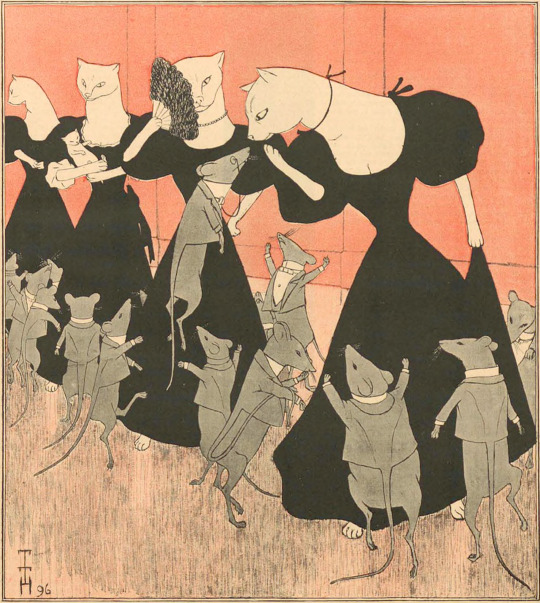
Cats and their rodent admirers. Simplicissimus. July 18, 1896. Cover art.
Internet Archive
#humor#cat#cats#mouse#mice#clothed animals#anthropormrphic#dance#dating#rodents#nemfrog#magazine illustration#1896#19th century#5k
8K notes
·
View notes
Text
The new house is a BABY. About 100 years younger than my parents' house. And it Feels Young. I don't think I could live in anything resembling a new build. But this one (about 70 years old) is nice. And new. Comparitively
#birch speaks#its got the original builder's plaque with the actual date#the home i grew up in & still live in (part time now tho) is from at least 1896 but is on fire maps back to the 1860s
1 note
·
View note
Text
All the time travelers are hiding out on February 29th, 1900: The day that didn't exist.
See, 1896 was a leap year. 1904 was a leap year. But 1900 wasn't, because the rule for leap years isn't "every 4 years" but "every 4 years, except every 100 years, except except every 400 years".
So 1900 wasn't a leap year. A lot of people at the time didn't know that, and they wrote down the date as 02/29/1900... the US government still has the weather records to prove it. We have recorded temperatures and rainfall on a day that didn't happen.
But if you need to find a time traveler, that's when they're hiding.
4K notes
·
View notes
Text


• Dress.
Department Store: Fox
Date: 1896-1899
Medium: Wool, silk
#fashion history#history of fashion#dress#fashion#19th century fashion#19th century#19th century dress#fox#1896#1899#wool
1K notes
·
View notes
Text
The (Formerly) Longest Reigning Queen - Victoria
The (Formerly) Longest Reigning Queen – Victoria

View On WordPress
#1896#America#England#History#King George III#mark loves history#Queen Elizabeth II#queen Victoria#September 22#this date in history#This Day in History#today in history
0 notes
Text
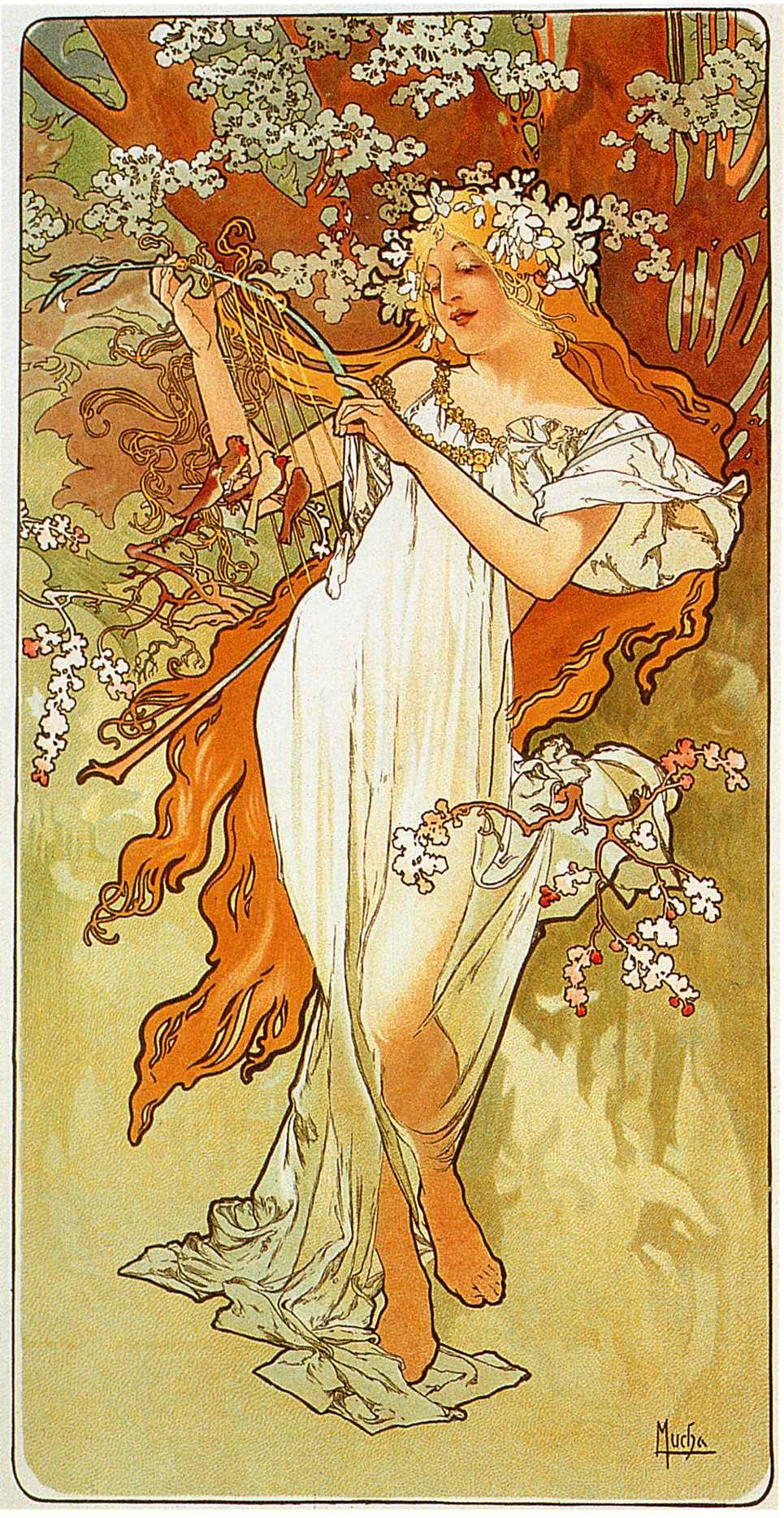
Title: Spring
Artist: Alphonse Mucha
Date: 1896
Style: Art Nouveau
Genre: Allegorical Painting
#art history#art#painting#artwork#history#museums#culture#vintage#curators#art nouveau#alphonse mucha#classicalcanvas
3K notes
·
View notes
Text
So, I saw a post circulating here about the “extinction of birds in 2023“, with this picture attached
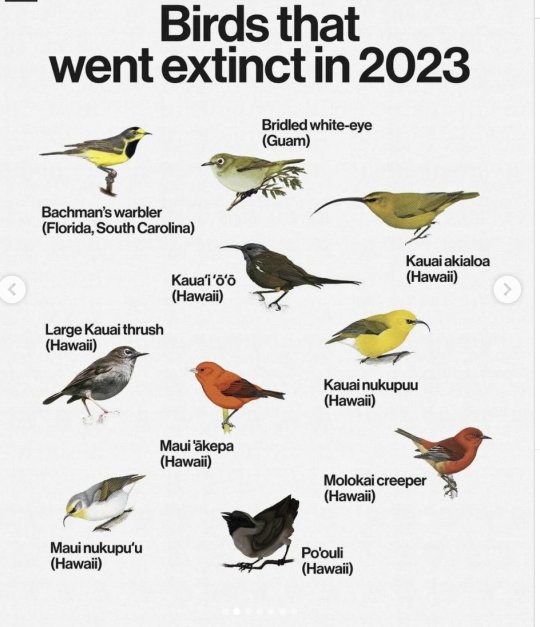
My, what a bold claim! All these poor birdies, “went extinct” in just one year alone? Why would such an outrageous, depressing and catchy claim be spread around?
Let’s fact check it.
All the species listed, Bachman’s wabler (Vermivora bachmanii, 1988 or 1980s), Kāmaʻo or large Kauaʻi thrush (Myadestes myadestinus, 1989 or 1987), Bridled white-eye (Zosterops conspicillatus, 1983 and 1983), Kauai ʻakialoa (Akialoa stejnegeri, 1969 or 1960s), Kauaʻi ʻōʻō (Moho braccatus, 1987 and 1987), Kauaʻi nukupuʻu (Hemignathus hanapepe, 1899 and 1899), Maui ʻakepa (Loxops ochraceus, 1988 and 1988), Kākāwahie or Molokaʻi creeper (Paroreomyza flammea, 1963 and 1963), Maui nukupuʻu (Hemignathus affinis, 1896* and 1996 ) and Poʻouli (Melamprosops phaeosoma, 2004 and 2004) are all, indeed, either extinct or possibly extinct, according to IUCN Red List of Threatened Species and U.S. Fish and Wildlife Service.
What are the dates after the scientific names? Well, those all are *last sightings* per IUCN Red List and USFWS accordingly. So, these birds were not seen for DECADES and in one case FOR MORE THAN A GODDAMN CENTURY. And sure as hell there is NO information about them very suddenly being gone all last year.
What’s the deal then? Where did this claim even come from? Well, likely from this article "21 Species Delisted from the Endangered Species Act due to Extinction" from U.S. Fish & Wildlife Service. It includes all the birds in the picture (with the last date of sight, listed above).
From the article: “The U.S. Fish and Wildlife Service is delisting 21 species from the Endangered Species Act due to extinction. Based on rigorous reviews of the best available science for each of these species, the Service determined these species are extinct and should be removed from the list of species protected under the ESA. Most of these species were listed under the ESA in the 1970s and 80s and were in very low numbers or likely already extinct at the time of listing.”
They didn’t ALL fucking suddenly drop dead all in the same year – if they did, as some other people have already pointed out, there would be an uproar EVERYWHERE. Ornithologists alone would not let it live down. They were officially delisted from endangered status by U.S. Fish & Wildlife Service that year, there was a proposition to do so back in 2021, too. Some were already declared extinct before by IUCN.
Despite not being seen for so long, they remained on the list of critically endangered for a long while, cause you cannot just immediately declare a species extinct. There’s no RTS unit amount number that goes to 0 once there’s nothing left; people keep checking for them over and over and over again. Sometimes it turns out that a species previously thought to be extinct is actually still out there. Attenborough's long-beaked echidna for example was last sighted SIXTY YEARS ago before being sighted again in 2023. It was thought to be extinct for a while, before 2007, when signs of its activity was spotted again. More often than not though, a species turns out to be actually very extinct, unfortunately – like in this case.
I cannot possibly know if the creators of this picture, or people that spread it on social media ever had good intentions behind it for awareness, however even if they did, it turned out to be nothing but very blatant misinformation, with a fearmongering effect. The only thing this achieves is not awareness of habitat destruction or pernicious tourist influence or climate change or what have you – the only thing this achieves is despair and panic. People already so casually fall into complete doomerism, they’re very used to hear bad news. And guess what doomerists do? Typically nothing. It renders people helpless. It’s not gonna make people get up and be ready for action, it, at best, would just make people feel sad and/or angry, or at worst, feed into the current alarming rise of ecofascism. NOTHING good comes out of this. At the very goddamn least, no one needs to lie to promote a goal.
The aim of the USFWS article, on the other hand, IS to make people aware about those animals that are already gone from the face of the planet, no matter how long ago, and that now we have to protect those animals that are critically endangered and still out there – to not have to repeat those tragedies.
Be very critical of what you see on the internet, especially if it’s sited with no sources. Especially-especially if it causes a strong emotional reaction. Lies and misinfo could only hurt the cause, no matter how noble. And please, be aware of your local wildlife status. Check in with it accoding to trusted sources.
[*sic, possibly a typo and it was meant to be 1996, other confirmed date listed there is 1989]
Addendum: I could not for sure find the uncredided (who woulda thunken that ppl that don't cite their sources would also not credit the artists) author(s) of the bird illustrations. If someone finds them, please, let me know!
Edit: Huge thanks to moosefinch for finding the sources for the artwork! I'll add their contribution below:
"Image sources!
The Kauai ʻakialoa, Kauaʻi ʻōʻō, Maui ʻakepa and Kauaʻi nukupuʻu are from Birds of the World.
The "Maui nukupuʻu" and "Molokaʻi creeper" illustrations are also Birds of the World, but are actually a female Kauaʻi nukupuʻu (the other being the male) and Laysan honeycreeper/Laysan ʻapapane respectively.
The bridled white-eye is by Lauren Helton according to this source.
Bachman's warbler is by Lynn Hawkinson Smith/smithhouse2 according to this Etsy listing.
The Poʻouli is by Christina Czajkowski."
#ah I just now see that the tumblr reblog of the pic and the twitter thread attached was deleted#yet the post is still in circulation. The damage lingers#so fucking irresponsible#fact check#misinformation#birds#bird#ecology#environmentalism#extinction#conservation#species conservation#animals#hawaiʻi#important
810 notes
·
View notes
Photo

Women's Suffrage Date
by geoo_mapss
Women's suffrage is the right of women to vote in elections. Beginning in the start of the 18th century, some people sought to change voting laws to allow women to vote. Liberal political parties would go on to grant women the right to vote, increasing the number of those parties' potential constituencies.
New Zealand was the first country to grant women the right to vote in 1896.
1K notes
·
View notes
Note
(this is more of an 'Alastor fact' I put together in a research dive, and have been very interested in?)
Alastor died in 1933, around his late 30's and early 40's canonically, though I've mostly seen his age range from 37-40's. I'm personally placing him at 37. WW1 was in 1917, 1933(his death date)-37 making Alastor's birth year 1896.
WW1 started in 1917, so by doing some math Alastor would technically be 21+ when the war started. Making him viable for the first American drafts.
Also, using some very estimated knowledge, Vox may have served in WWII?
Either way, Alastor was in the TRENCHES.
YES!!! And most people who knew how to operate radios was because they learned it during the war!
192 notes
·
View notes
Text
X-Ray Image Taken By Nikola Tesla (1896)
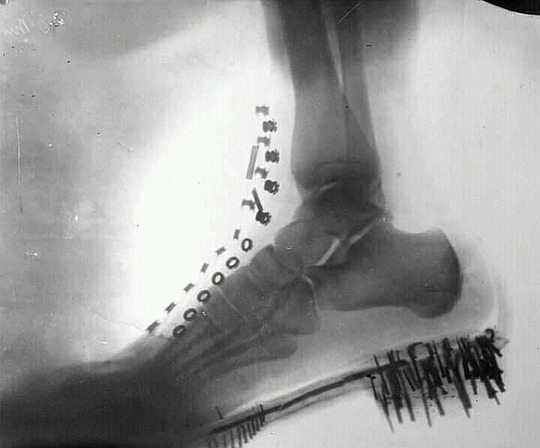
Though not widely known, Nikola Tesla spent a great deal of time intensively researching X-rays, publishing his results during the period between March 11, 1896 to August 11, 1897. He also gave a lecture on April 6, 1897 presenting designs of several different devices that could generate these powerful rays. During this lecture, he shared similar data and conclusions from his earlier experiments with Crookes tubes in 1894. Crookes tubes were invented by British scientist William Crookes in order to study electrical discharges in vacuum tubes. During Tesla’s experiments in 1894, he observed that some of the tubes that produced only feeble visible light had more effect on photographic plates than tubes which were brighter. Since it was obvious that there must be some kind of energy coming from the tubes with feeble light, and their properties were still unknown, Tesla used the term “radiant matter" to describe these radiations. With these tubes, Tesla produced some of the first X-ray imaging, which he called “shadowgraphs,” due to their dark nature, but still did not realize the importance of these radiations. To him, the photographs taken seemed to be spoiled due to unaccountable marks and defects. In March of 1895, a fire broke out in his laboratory, destroying practically all of his equipment and experimental data to date. It took several months before he could resume his work, and in the meantime, a German scientist named Wilhelm Röntgen made his X-ray discovery in the same year (December, 1895). Roentgen first detected the radiation by accident in his experiments where he was testing whether cathode rays emitted from Crookes tubes could pass through glass, and or other solid objects, but was astonished to find that the rays emitted would pass through thinner objects and leave shadows of the more solid objects behind (such as with skin and bones). When Tesla heard this news, it was immediately obvious to him what had been problematic in his laboratory work. Realizing and regretting that he had missed out on making a major scientific discovery, Tesla would say, “I realized that my guiding spirit had again prompted me and that I had failed to comprehend his mysterious signs.” He repeated Röntgen's experiments, and came to much better results than Röntgen and others since he had his newly developed Tesla Coil. With this apparatus, he immediately realized the importance of high voltages for producing powerful rays and suggested using his newly developed single-terminal tubes and connecting them to the secondary coil of the transformer. In 1896, Röntgen acknowledged Tesla’s discoveries and in a lecture before the Physical Medical Society in Wurzburg, Germany, discussed the advantage of using Tesla’s high-frequency transformer in generating X-rays. Tesla would also become one of the first scientists to point out the harms of these rays and developed safer ways to utilize them for medical use. Methods we still use today. On the other side of town, others like Thomas Edison thought these newly discovered rays could cure the blind. Many patients who were experimented upon starting showing terrible illnesses, one being his assistant who later had to have both arms amputated. Edison was quoted in an interview saying, “Don’t talk to me about X-rays…I am afraid of them.”
Nikola Tesla would later give all credit to Röntgen for the discovery, and throughout the next few years, produced some of the best X-ray imaging that even Röntgen praised. In a letter to Tesla, Röntgen wrote, “Dear Sir! You have surprised me tremendously with the beautiful photographs of wonderful discharges, and I tell you thank you very much for that. If only I knew how you make such things!”
#nikola tesla#science#history#x ray#X-rays#technology#invention#medical#electricity#quotes#ahead of his time#ahead of our time
159 notes
·
View notes
Text
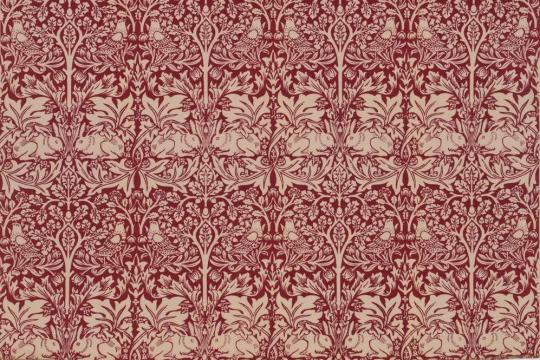
William Morris, (Artist), British, 1834-1896
J.H. Thorp & Co., Inc., New York, NY, (Manufacturer),
Rabbit Pattern Printed Fabric Mfr. No. 23583
Manufacture date: c. 1942
Printed from original pattern cuts.
Gift of Edgar Kaufmann, Jr.
117 notes
·
View notes
Text
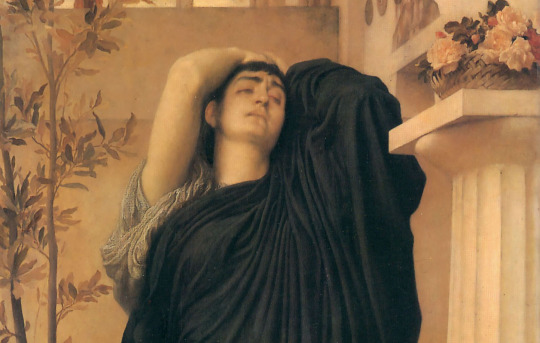

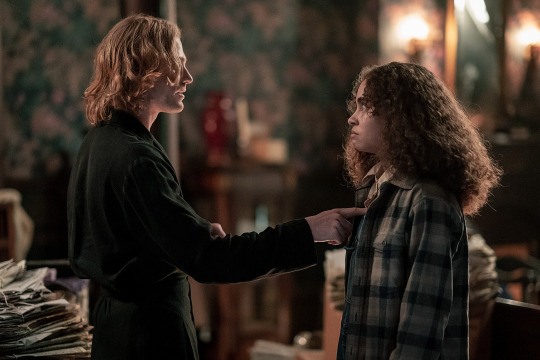


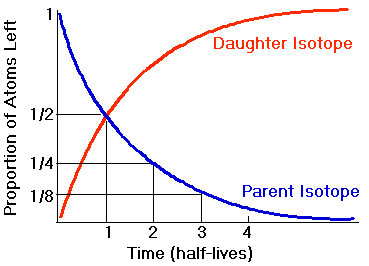
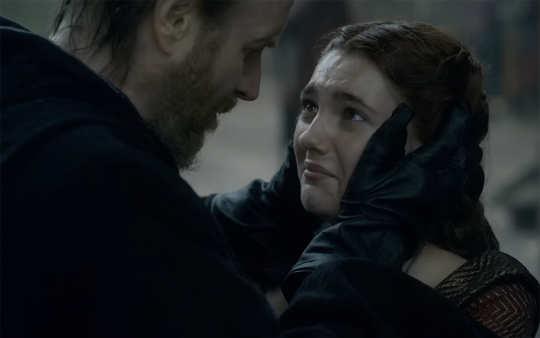
the worst man alive + his favorite daughter
electra at the tomb of agamemnon by federic leighton (1830–1896) / YOU s4e4: hampsie / interview with the vampire s1e5: a vile hunger for your hammering heart / scandal s7e1: watch me / succession s2e1: the summer palace / RADIOMETRIC DATING: age of substence based radioactive decay / house of the dragon s1e5: we light the way
corresponding spotify playlist here
inspired by this post by @devilskettle and this post by @dirchristophernolan
#web weaving#compilation#compilations#father daughter relationship#electra at the tomb of agamemnon#federic leighton#you netflix#interview with the vampire#iwtv amc#iwtv#claudia iwtv#claudia de pointe du lac#lestat de lioncourt#lestat iwtv#scandal abc#scandal#olivia pope#eli pope#succession#shiv roy#siobhan roy#logan roy#alicent hightower#otto hightower#house of the dragon#hotd#hotd s1
155 notes
·
View notes
Text
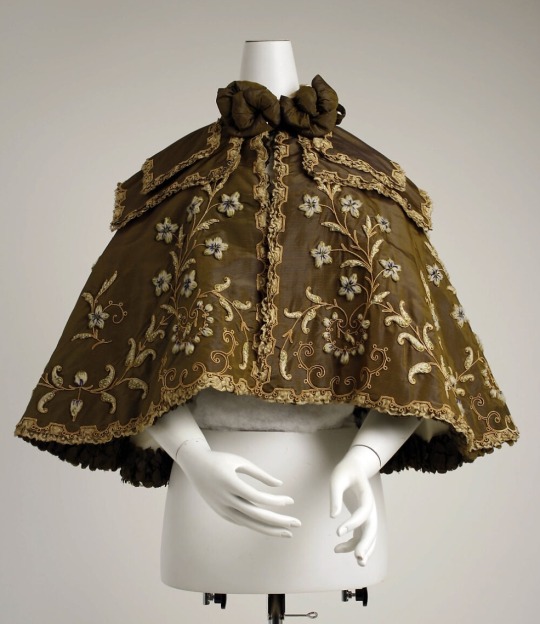

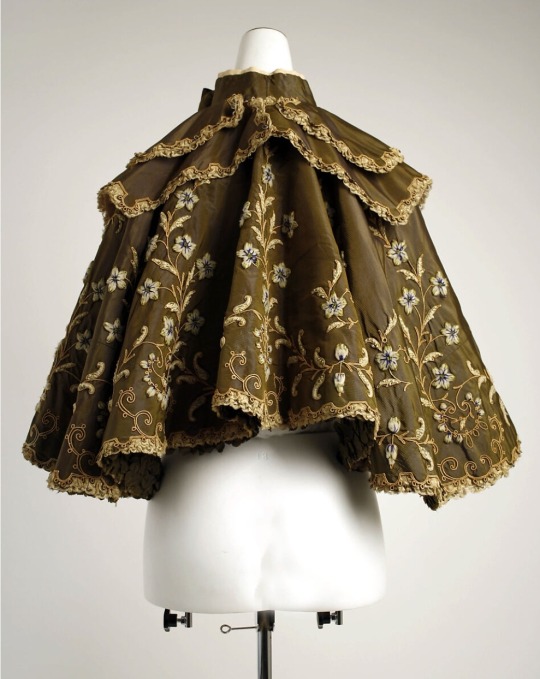

Title: Opera cape
Design House: Beer (French, ca. 1890–1928)
Designer: Gustave Beer (French)
Date: ca. 1896
Culture: French
Medium: silk, wool
#historical fashion#fashion history#19th century fashion#19th century#victorian fashion#late victorian era#cape#gustave beer#1890s fashion#belle epoque#fin de siècle
477 notes
·
View notes
Text
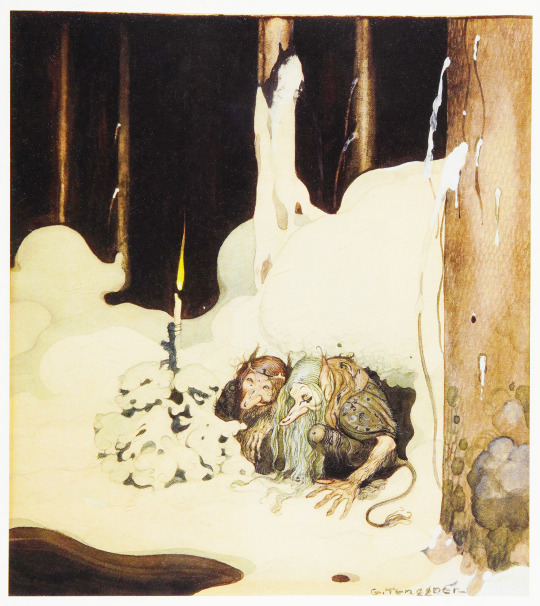
Gustaf Tenggren (1896-1970), 'Elves By Candle', no date
Source
83 notes
·
View notes
Text


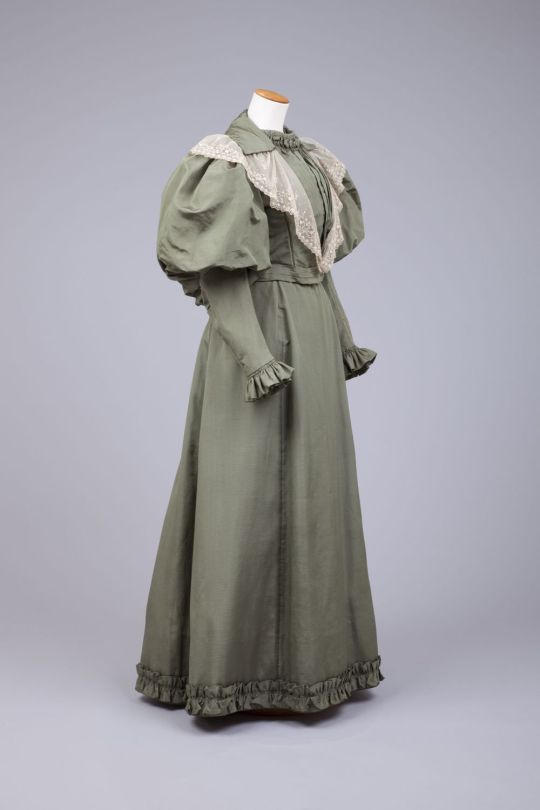



• Daytime Dress.
Date: 1895-1896
#fashion history#history of fashion#dress#fashion#19th century fashion#19th century#19th century dress#daytime dress#1895#1896
830 notes
·
View notes
Text
What did Jonathan Harker see in Budapest?
Welcome to Budapest, my dear friend Jonathan Harker! :) Reading Dracula again I’ve noticed that while Jonathan was writing about taking “a little walk through the streets” the things he mentions in his diary, the splendid bridges and the traditions of Turkish rule, are quite far from the train station. So I’ve decided to follow him and try to guess what did he actually see.
First thing first, Jonathan’s train most likely had arrived to the Eastern Railway Station, where most of the Vienna trains had arrived and from where all the trains to Klausenburg (Kolozsvár / Cluj Napoca) had departed.

Then, if Jonathan walked all the way to the Danube, he definitely could see some of “the most western of splendid bridges”, like the Franz Joseph Bridge (today’s Liberty Bridge). Or maybe not. The Franz Joseph Bridge were opened in 1896 so if Jonathan visited Budapest before Dracula was pulished he most likely saw the bridge being constructed, an impressive sight nonetheless.
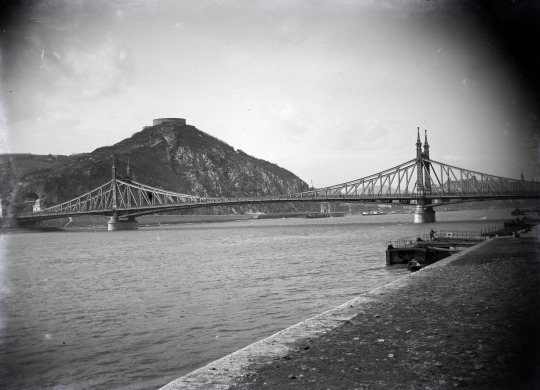
Or the Chain Bridge (with the Royal Palace on the Castle Hill in the background). It takes almost an hour to walk from the Eastern Station to either of the bridges, so Jonathan did not walk a little, he did walk a lot. And if he wanted to see everything else he wrote about, he had to walk even more!

You see, funny thing is, all “the traditions of Turkish rule” are on the Buda or the west side of the Danube, which means that Jonathan’s beautiful description of leaving the West and entering the East is not correct at all. But if he wandered to the western side of the river, he definitely could see some buildings dating back to the Ottoman era, like the Rudas Baths, an original turkish bathhouse still in use. (Okay, this picture is from the 1960s, but the Rudas Baths still looks like this.)

All he could see on the eastern side of the city was some moorish style architecture from the 19th century, like the Great Synagogue of Pest, which is an extremely beautiful building, but it has nothing to do with the Turks.

All in all, if Jonathan could see all of this and got back to the station in time to catch his train, he is quite the champion of city walking! Or maybe he just took the tram. All of the photos above (except the one of the Rudas Baths) are from around 1897, the year Dracula was first published.
Sources (because I’m a good dutiful librarian):
Eastern Railway Station: Fortepan / Budapest Főváros Levéltára. Levéltári jelzet: HU.BFL.XV.19.d.1.08.034
Liberty Bridge: Fortepan / Budapest Főváros Levéltára. Levéltári jelzet: HU.BFL.XV.19.d.1.08.107
Chain Bridge: Fortepan / Budapest Főváros Levéltára. Levéltári jelzet: HU.BFL.XV.19.d.1.08.078
Rudas Baths: Fortepan / Budapest Főváros Levéltára. Levéltári jelzet: HU_BFL_XV_19_c_11
Great Synagogue: Fortepan / Budapest Főváros Levéltára. Levéltári jelzet: HU.BFL.XV.19.d.1.07.137
#personal#history#hungary#budapest#bram stoker#dracula#dracula daily#sightseeing with our friend jonathan#i love to be a librarian
610 notes
·
View notes